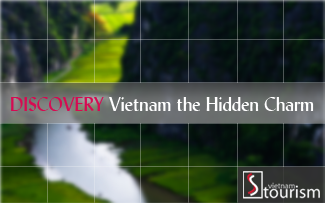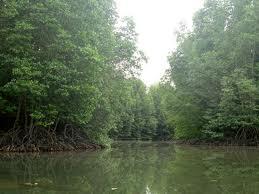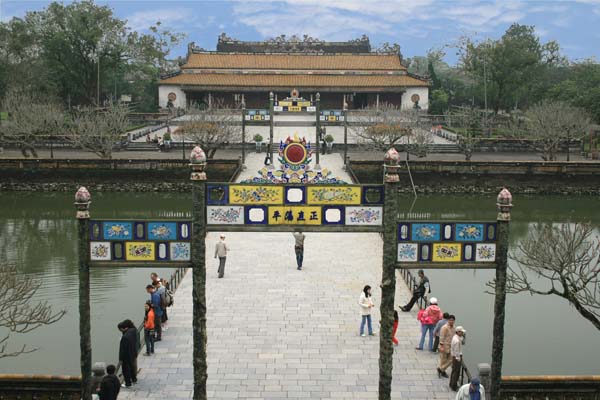With 30 km south of Danang, lies on the banks of the Thu Bon River. Occupied by early western traders, Hoi An was one important trading centers of Southeast Asia in the sixteenth century.
Hoi An features a distinct Chinese atmosphere with low, tile-roofed homes and slender streets; the initial structure of a number of streets still remains almost unchangeable. All the homes were made from rare wood, adorned with lacquered boards and panels engraved with Chinese characters. Pillars were also carved with decorative styles.
Tourists are able to visit the relics of the Sa Huynh and Cham cultures. They can conjointly get pleasure from the attractive scenery of the romantic Hoi An River, Cua Dai Beach, and Cham Island.
Over the previous couple of years, Hoi An has become a really well-known tourist destination in Vietnam.
Bright Light
NO FLUORESCENT LIGHTS. NO MOTORCYCLES. NO TELEVISION. ON THE 14TH DAY OF EACH LUNAR MONTH, THE RIVERSIDE TOWN OF HOI AN GIVES MODERN LIFE THE NIGHT.
In a wood-fronted retailers a woman in ancient dress sits at a table, bathed within the light of a lantern made up of a straightforward bamboo fish-trap. Outside, two old men are interested in a very candlelight game of Chinese checkers. These scenes, straight out of the nineteenth century, still happen in Hoi An, a sleepy riverside city in the central province of Quang Nam.
Hoi An has long been a cultural crossroad. Over 5 centuries ago, the Vietnamese nation of Dai Viet enlarged its territory southwards, invaded on the Indianized Kingdom of Champa, now, it is central Vietnam. Hoi An, located on the Hoai River when Japanese and Chinese traders designed a commercial district there in the sixteenth century.
These various cultural influences stay visible at present. Guests will find Hoi An's Old Quarter lined with two-storey Chinese retailers, their elaborately carved wooden facades and moss-covered tile roofs having withstood the ravages of over three hundred years of weather and warfare. These proud previous buildings, which are back onto the river, remind guests of another era, when Hoi An's market was crammed with wares from as so much afield as India and Europe. Vibrant guildhalls, founded by ethnic Chinese from Guangdong and Fujian provinces, stand quietly, a testament to the town's trading roots. While Hoi An's old-fashioned school is often visible, on the 14th of each lunar month modernity will turn back. On these evenings the town turns off its street lamps and fluorescent lights, leaving the Old Quarter bathed within the warm glow of colored silk, glass and paper lanterns. In earlier period,
Vietnamese individuals created lamps out of shallow bowls crammed with oil. Later, foreign traders introduced lanterns, starting from spherical and hexagonal styles from China to diamond and star formed ones from Japan.
Let there be light
When developing plans to preserve their town's ancient character, Hoi An residents determined to revive the observe of using colored lanterns. Beginning within the fall of 1998, one night every month is asserted a "lantern festival". On the 14th day of each lunar month, residents on Tran Phu, Nguyen Thai Hoc, Le Loi and Bach Dang streets switch off their lights and suspend cloth and paper lanterns on their porches and windows. TV sets, radios, street lights and neon lights are turned off.
In the quiet the in streets of Hoi An are at their most romantic, the darkness broken solely by jeweltoned lanterns in all manner of shapes and sizes. Strolling through the lantern-lit streets is like walking into a fairytale. It's all the a lot of picturesque since motorized vehicles are banned from Hoi An's Old Quarter. On Trai Phu Street, looking at Faifo Restaurant to sample, some ancient Chinese-style pastries. Or walk on to the Treated
Café, where bamboo baskets, generally used to scrub rice, are remodeled into distinctive lanterns. These basket lamps are however one example of people's creativity as they experiment with new shapes and materials, together with lights made up of hollow bamboo tubes.
A Warm Glow
The 14th day of the lunar month is a Buddhist day of worship. Local people place offerings of food and incense on their ancestral altars and visit one amongst Hoi An's several pagodas. The scent of incense and the sounds of individuals singing raise the town's enchanted atmosphere. On these evenings, guests can get a rare glimpse into another era. These nights are a welcome reminder of life's sudden beauty.
vietnamtourism.com
Vietnam guide, Vietnam travel guide

 bởi
bởi 


